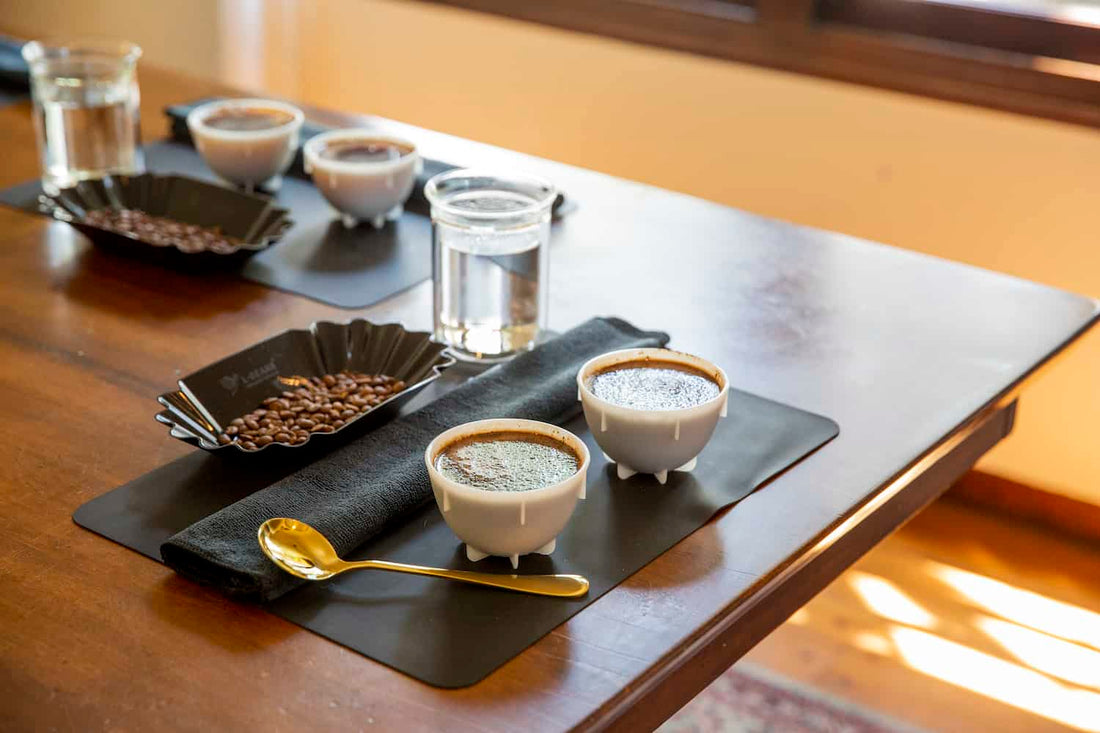
Coffee Cupping: The Ultimate Guide to Tasting Coffee Like a Pro
Share
At Procaffeinate, we believe that coffee is more than just a morning ritual its an art. To truly appreciate the depth, complexity, and craftsmanship that goes into every cup, professional tasters and coffee aficionados turn to a practice known as coffee cupping.
Whether youre an aspiring coffee connoisseur or simply curious about how experts evaluate coffee, this guide will take you through everything you need to know about coffee cupping, from its purpose to the step-by-step process of how to do it yourself.
What is Coffee Cupping?
Coffee cupping is a structured tasting method used by roasters, baristas, and coffee professionals to evaluate the quality, aroma, and flavor profile of coffee beans. It is a standardized process that allows for an objective comparison of different coffees, ensuring consistency in grading and quality control.
This technique is widely used in the specialty coffee industry to identify unique characteristics in coffee, determine roast profiles, and detect any defects in beans.
Unlike traditional brewing methods, cupping ensures that the coffee is tasted in its purest form, without interference from brewing variables like water temperature, pressure, or extraction time.
Why is Coffee Cupping Important?
Cupping is not just for professionals it’s also a great way for coffee enthusiasts to enhance their palate and deepen their appreciation for coffee. Heres why it matters:
Quality Control Roasters use cupping to assess the quality of beans before they are sold to customers.
Profiling It helps in identifying tasting notes like chocolate, citrus, or floral undertones.
Coffee Education Cupping allows individuals to refine their taste buds and recognize different origins and processing methods.
Purchasing Decisions Buyers use cupping to select the best beans for their coffee shops or roasteries.
What You'll Need for Coffee Cupping
To host a coffee cupping session at home, you'll need the following:
1. Freshly Roasted Coffee Beans – Whole beans that have been roasted within 7-14 days for optimal freshness.
2. Burr Grinder A consistent grind size is crucial. Medium-coarse grind works best.
3. Cupping Bowls or Glasses Each should hold about 200ml of water.
4. Cupping Spoons Deep, rounded spoons used for slurping and tasting.
5. Kettle & Hot Water Filtered water heated to around 93°C (200°F).
6. Scale For precise measurements of coffee and water.
7. Timer Ensures accurate steeping times.
8. Cupping Forms Used to record aroma, flavour, body, acidity, and aftertaste.
Step-by-Step Guide to Coffee Cupping
1. Weigh and Grind the Coffee
Use 8.25 grams of coffee per 150ml (5oz) of water.
Grind the coffee to a medium-coarse consistency (similar to sea salt).
Place the ground coffee into each cupping bowl, using separate bowls for different coffee samples.
2. Evaluate the Dry Aroma
Before adding water, smell the dry coffee grounds.
Take notes on initial aromatic qualities—are there nutty, fruity, floral, or chocolatey scents?
3. Add Hot Water
Pour hot water (93oC) evenly over the grounds, filling each bowl.
Let the coffee bloom and steep for 4 minutes.
4. Break the Crust
After 4 minutes, a layer of grounds will form on top.
Take a spoon and gently push through the crust while inhaling deeply.
This releases trapped aromatics record any new scent notes.
5. Skim the Foam
Use two spoons to remove the floating grounds and foam from the surface.
6. Begin Tasting
Let the coffee cool slightly to around 60°C (140°F) for the best flavour perception.
Use a cupping spoon to take a small amount of coffee and slurp it loudly.
Slurping aerates the coffee, spreading it evenly across the tongue for full flavor detection.
7. Assess the Coffee
As you taste, analyze the following characteristics:
Aroma How does the fragrance change after adding water?
Acidity Is it bright, citrusy, or mellow?
Body The texture and mouthfeel of the coffee (light, medium, or full).
Flavour Specific tasting notes like caramel, berries, or nuts.
Aftertaste The lingering flavors once the coffee is swallowed.
Understanding Flavour Profiles in Coffee Cupping
Each coffee origin and processing method brings out different tasting notes. Heres a quick guide to common coffee flavors:
|
Origin |
Typical Flavor Notes |
|
Ethiopia |
Floral, citrus, berry-like |
|
Colombia |
Nutty, caramel, balanced acidity |
|
Brazil |
Chocolate, nuts, low acidity |
|
Kenya |
Bright, winey, blackcurrant |
|
Sumatra |
Earthy, spicy, full-bodied |
Using the SCAA (Specialty Coffee Association of America) Coffee Tastes Flavour Wheel can also help in identifying nuanced flavours.
How to Improve Your Cupping Skills
1. Cup Regularly The more you practice, the better your palate becomes.
2. Compare Coffees Side by Side Tasting multiple coffees together highlights subtle differences.
3. Use Descriptive Language Avoid generic terms like a goods or âbad Instead, describe flavours with precision.
4. Stay Open-Minded Experiment with different origins, roasts, and processing methods.
Coffee cupping is an essential skill for anyone looking to truly understand and appreciate coffee. Whether youe a professional roaster or a home enthusiast, this process allows you to explore coffee on a deeper level, recognising its complexities and unique characteristics.
At Procaffeinate, we take pride in sourcing the finest, ethically produced coffee beans, ensuring that every cup delivers a luxurious and memorable experience. Why not try coffee cupping with our premium selection and discover the world of coffee like never before?
Explore our range of specialty coffees here and start your cupping journey today!




